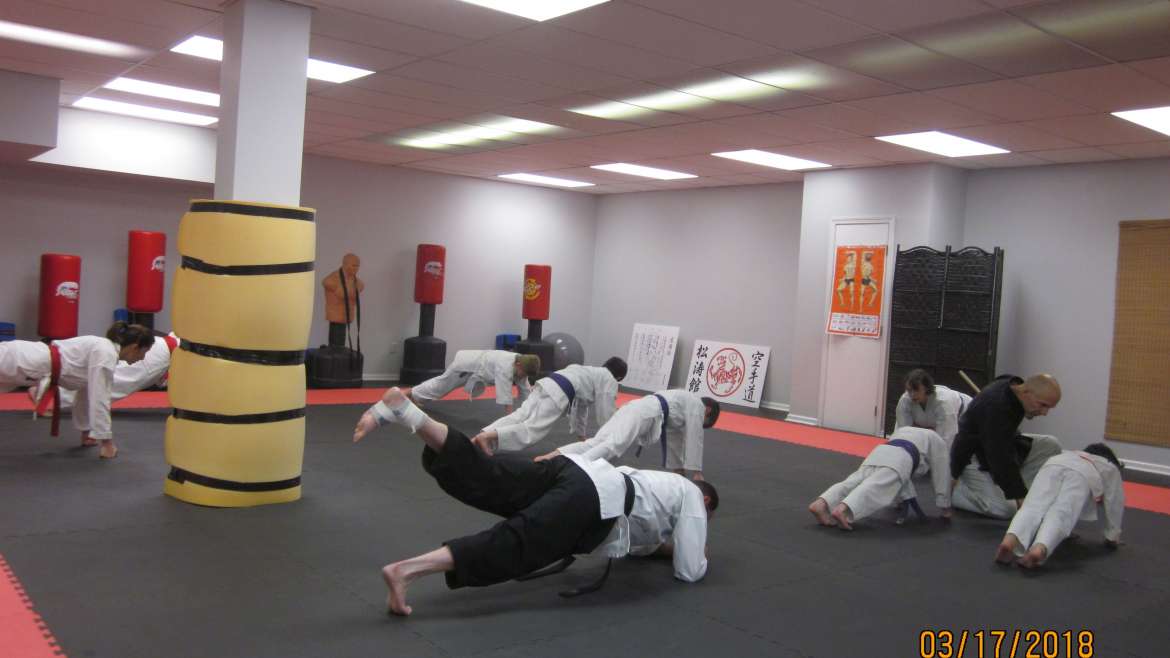Karate naturally exercises all the major moving components of the torso and limbs. During our ordinary practice we are typically stepping through stances and using both our left and right hands and arms to perform techniques. This means that all parts of the body have to work in unison in a coordinated fashion. Furthermore, whenever we are doing any kick or other leg technique, such as a sweep, we are momentarily balancing on only one leg. Obviously this requires us to develop an above-average skill in balancing, which often comes in handy outside of karate practice.
Many Shotokan Karate techniques make use of explosive speed and maximum power delivered by the entire body through the point of impact (fist, elbow, foot, ‘palm heel,’ etc.). This requires both a high degree of muscle relaxation (to achieve speed) and high muscle tension (momentarily, at the point of impact) in order to be successful. Relaxation during the delivery of a technique in turn requires good breathing control. And tensing of all muscles involved in delivering a strike requires a high degree of muscle coordination and burns a lot of energy, too. So delivering our techniques during traditional modes of practice is very vigorous physical exertion, whether we are doing it at half speed, to work on breathing control and correctness of technique, or full speed, to unleash our power.
Those of us who began our training in traditional Japanese karate schools learned, and we teach it to our students, that all of our techniques and movements begin from the “hara,” roughly the middle of the abdomen, the region of the body from which our vital energy of life force is said to emanate. In common language, we say “move from your hips.” In practice, this requires us to increase the strength and flexibility of the muscles around the hara – better known as one’s “core.”
Shotokan Karate was developed in Japan during the early 20th century as a very efficient program of physical education (PE) for children. Therefore, it also demands a rather large “ranges of motion,” which means that in ordinary practice the techniques are done in a big way, with large linear or sweeping motions that stretch the muscles. (In actual self-defense, we use smaller movements because the larger ones take too much time!) This also applies to the various stances we practice in, which in Shotokan are very low. All of this is to say that karate both requires, and helps one to achieve, flexibility of muscles and other connective tissue and healthy range of motion of joints.
To supplement the ordinary training of techniques and stances, we also have exercises and drills that increase balance and coordination, strength and flexibility, and cardio fitness. To sum up, karate practice is an ideal physical exercise — it’s great for coordination, balance, breathing, muscle relaxation, “core” strength, and flexibility* – and it burns a lot of calories! Let us also add that regular practice adds vitality and youthfulness. Many of us are older than we look. :-]
Lastly, we should add that karate is extremely well-suited for individuals of various physical abilities, limitations, and ages. We can scale the training up or down, harder of softer, faster or slower, depending on the capacity of each student. This also applies to someone who has an injury or other temporary limitation, which happens to all of us eventually!
*Coordination, balance, and relaxation are especially important, developmentally, for young children, and experience has taught us that karate is very helpful in this regard.


